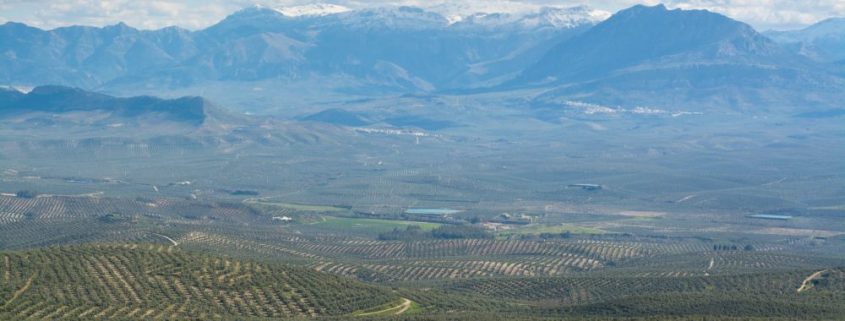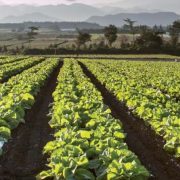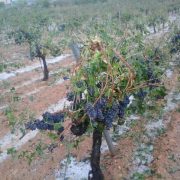The filtration of a tree of the new PAC generates great doubts among farmers and ranchers
The Union of Small Farmers and Cattle Ranchers has shown its uncertainty about the important reforms that the European Commission is proposing in its draft new Common Agricultural Policy. Although they recognize that the debate on the future CAP “has only just begun”, it does seem that Brussels intends to design a more decentralized CAP, more audited and revised and greener. “Of course it does not seem that they intend to make life easier for the recipients, but complicate things even more,” they say.
Failing to specify the budget that the European Union will allocate to the future Common Agricultural Policy, they begin to know some data that have not reassured Spanish farmers and ranchers. The agrarian organization UPA has analyzed the draft that has been leaked in recent days, ensuring that it contains “some interesting proposals and others very worrying.”
Among the most negative reforms, the European Commission seems to favor a CAP “on demand” for each Member State, and even for each region. This could be very problematic for Spain, since it would be necessary to develop a “strategic plan” for the application of the CAP for each Autonomous Community, which would be, according to UPA, “chaos and nonsense”.
“In the field we understand the uncertainties generated by the Brexit in the financial perspectives,” they have explained from this organization, but the European authorities must be clear, they point out, “that a strong and ambitious CAP must be one of the pillars of the European project” . “We will not accept cuts”, they have sentenced.
Some positive proposals
Some of the reforms reflected in the filtered draft have not sounded bad to small and medium farmers and ranchers. The main ones: the figure of the so-called “genuine farmer”, which each country should define; the subsidy ceiling for exploitation – long claimed – that the proposal fixes at 60,000 euros; or uncoupled redistributive aid for small and medium-sized farms. The draft reform also talks about special aid for young producers and an “Eco program” with subsidies for the most sustainable.
UPA report: main reforms included in the draft of the new PAC
Genuine farmers and ranchers: the draft introduces a new definition of “genuine farmers”, which will have to be developed by each Member State. This definition will have to be based on the importance of agricultural income over the potential income of the potential beneficiary. This definition would not be exclusive, it would only be a priority to be able to access certain aids.
Strategic plans: The basis of the new model is established according to the strategic plans that must be signed by the Member States with the European Commission. These plans include both Pillar I and II.
In the case of Spain, we would have the added difficulty of territorial competences and the possibility of having a strategic plan by Autonomous Community, with different criteria and aids.
The strategic plans must analyze the situation of the sector and establish concrete measures with the aim of achieving the objectives established by the European Commission at the beginning of the period. These objectives are divided into 3 blocks (productive or economic, environmental and social).
The economic would encompass income, competitiveness and value chain. The environmental, climate change, environment and landscape and social issues would be responsible for generational change, rural areas and food and health.
Also at European level, a series of indicators will be set (around 100) that will allow knowing the level of compliance with these objectives.
The measures that must be introduced in the strategic plan are described below. Some are compulsory and others are voluntary.
Compulsory aid
Base help It is a payment per decoupled hectare. The Member State can establish it based on basic payment rights and greening, and taking into account regionalization. The Commission wants to establish an aid ceiling per hectare that has not yet been finalized.
Redistributive complementary aid. Payment per decoupled hectare. It is a payment intended for small and medium-sized farms. The countries will decide the amounts per hectare and the number of hectares per farm. In principle, it would be linked to having the right to basic aid.
Payment for young people. Payment per decoupled hectare. For those who join for the first time. The country decides the concrete conditions. Compulsory assistance.
Voluntary aid
Eco Program: It is a payment per hectare for those farmers who are willing to carry out actions beyond the basic conditions that are established. In principle it could only be for “genuine farmers and ranchers”.
Associated aid: A list of sectors is established, among which there are no table olives, tobacco, poultry, beekeeping, cuniculture or pigs. Countries can allocate a maximum of 10% to these grants, with an additional 3% for protein crops. In principle it could only be for “genuine farmers”.
Capping: A maximum limit of aid per farm of 60,000 euros is established. Before applying this amount, it would be necessary to discount the salaries paid by the beneficiary, as well as the non-salaried labor of the holding.
Transfer between pillars: The country can decide to spend money between pillars up to 10%.
Advisory system: Countries must implement advisory services on a mandatory basis for farmers.
YOU MAY ALSO LIKE:
➡️UPA Madrid calls for unity in the case of Xylella fastidiosa and ASAJA for a solution and greater control
➡️UPA criticizes that the budgets of Rajoy for 2018 perpetuate the abandonment of the rural environment
















